What’s in store for global markets in 2016? We asked analysts, strategists and traders across Loomis Sayles to pinpoint trends and potential trouble spots for the markets next year.
Auto Trends
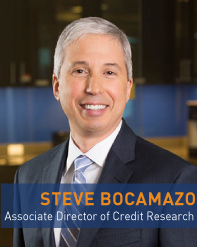 |
I expect consumer tastes to continue to shift in 2016 with the cross-over vehicle (CUV) gaining market share, principally at the expense of small and mid-sized passenger cars. Chinese consumers are adopting a similar affinity for CUVs, given recent sales trends. The growth in the popularity of CUVs is likely attributed to:
• Better fuel economy and handling compared to previously offered models
• Lower gas prices
• Empty-nesters trading down from larger SUVs
• A growing number of drivers who prefer 'command seating,' which allows drivers to sit higher, giving them a better view of the road"
|
— Steve Bocamazo, associate director of credit research
Technology
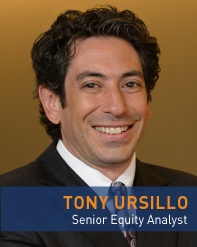 |
Three trends I believe will continue to influence and disrupt the industry in 2016:
• Consolidation, with the largest ever mergers in semiconductors and hardware
• Cloud disruption, which has hyperscale service providers and emerging technology companies changing the demand for and buying patterns of traditional on-premise technology products
• Activism, as vulnerable companies that are not benefiting from the previous two trends are targeted by an increasing number of aggressive shareholders pushing for change
What am I focused on for 2016?
• Pursuing investments that leverage cloud trends or are not in the path of its destruction (social networks, for example)
• Avoiding exposure to companies that have been disrupted by cloud-based technologies
• Continuing to seek out stocks that could see a lift from a takeout or traditional activist pressures, such as margin improvement and better capital return policies"
|
— Tony Ursillo, senior equity analyst
Telemedia
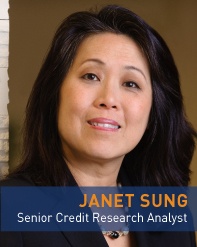 |
I believe online video streaming will become a key phenomenon that helps drive the future of the telecom, cable and media industries. In 2016, online video viewing will continue to proliferate, with the long-anticipated launch of Apple TV video subscription service adding to the recent releases of DISH's Sling, Verizon's GO90, Comcast's Watchable, HBO's Now, and the accelerated growth of Netflix and YouTube.
The number of cable video subscribers, especially of large bundles, will likely continue to decline. Cable distributors should increasingly win residential market share from telecom and satellite operators as their higher quality/ higher speed internet service becomes paramount for video downloading. Cable companies are likely to raise fees on broadband services to compensate for the gradual decline in linear video."
|
— Janet Sung, senior credit research analyst
US Banks
 |
Most balance sheets remain very strong with high capital ratios, strong liquidity and historically low non-performing loans and loan losses. The quality of loans to the oil and gas sector is being watched closely, but exposures currently appear too small to have a significant impact on asset quality statistics. Overall, US banks continue to cope well with the low interest rate environment. Most US banks should benefit from interest rates when they begin to rise."
|
— Elizabeth Schroeder, senior credit research analyst
Global Banks
 |
Banks around the world face a variety of challenges. In Europe, the new euro zone regulator is enforcing stricter bank capital rules. And in much of Asia, banks are dealing with deteriorating loan quality due to the ripple effects of China's slowing economy. I think bank prospects won't improve much until the world economy starts to pick up momentum in 2016."
|
— Julian Wellesley, senior equity analyst
Latin America
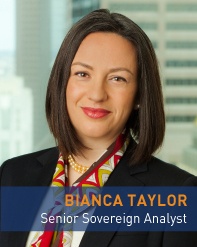 |
The slowdown in China is causing clouds to gather over the outlook for Latin America in 2016 and beyond. Without the terms of trade tailwind, Latin America will have to bootstrap new drivers of growth. It won't be easy as the region (with the exception of Mexico) hasn’t done any meaningful reform.
The Mexican reforms may not have helped the oil sector, but they have helped to unlock credit growth and have brought inflation down, increasing real wages. This, coupled with an MXN depreciation that increased the purchasing power of remittances coming from the US, means the consumer is likely to lead economic growth next year. If Banxico can stay sidelined, we could see an upside surprise to growth.
Unfortunately, there are not many other upside surprise stories to be told. The tightening cycle in Colombia could derail the last hope of growth they have. Chile and Peru are on the same path, only they face even stronger headwinds from China's de-industrialization.
Brazil's delicate political 'disequilibria' will lead to another downgrade in the coming year, and another recession is fully expected making this the worst economic downturn since the 1930s."
|
— Bianca Taylor, senior sovereign analyst
Bank Loans
 |
Some investors view loans as useful only in an 'up-rate' environment. 2015 showed that they are more than that. Loan performance, particularly conservative loans, really stood out against other fixed income asset classes despite continued rate-move delays from the Fed. Our outlook for 2016 remains positive as a limited bank loan maturity schedule should lead to another below average annual default rate."
|
— Cheryl Stober, product manager
Asia and El Niño
 |
A strong El Niño event occurs about every 20 years. This cycle’s El Niño is shaping up to rival the 1997 granddaddy of El Niños.
At the same time, Asia’s build up of leverage over the last several years is an overhang on growth. As growth slows in the region, monetary policy becomes an important consideration when assessing which countries are best-placed to deal with macro challenges that lie ahead.
In places where higher inflation and external liquidity are already constraints on policy, El Niño is likely to be an added complication. In both regards, Indonesia stands out as most vulnerable to a strong El Niño event."
|
— Celeste Tay, senior sovereign analyst
Fed Outlook
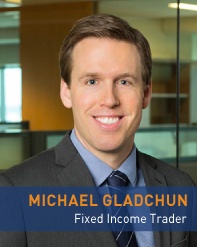 |
I believe the Fed will be walking a tightrope as they proceed with rate hikes next year. The unemployment rate is likely to fall below the Fed's forecasted levels, which would put pressure on them to tighten policy at a somewhat faster pace. However, with wage and broad inflationary pressures likely to remain subdued, I suspect the Fed will relieve this pressure by marking down their estimate of the long-term natural rate of unemployment. This would imply a more dovish reaction, which would be comforting to global markets that are already anxious about the pace of rising rates next year."
|
— Michael Gladchun, fixed income trader
Securitized Assets
 |
In 2015 securitized credit provided an island of relative stability in a volatile market. We expect that this trend will continue in 2016 as the factors that drove it:
• Strong consumer balance sheet
• Rising real estate prices
• and limited issuance, should persist.
In 2016 we see three main risk factors:
• Potential deterioration of underwriting practices, particularly commercial real estate and auto lending
• The amount and pace of the Fed tightening
• Market liquidity changes driven by bank regulation"
|
— Jennifer Thomas, securitized asset analyst
Agency MBS
 |
In 2016, we believe the performance of agency mortgage-backed securities (MBS) will continue to face headwinds. Our view is that current spread does not compensate for the call-ability of agency MBS: a large proportion of outstanding borrowers have very clean credit backgrounds, which means their mortgages are more easily refinanced. Uncertainty will be a key theme for 2016 - the mortgage outlook and the Federal Reserve's stance are both subject to change. It’s hard for us to see a reward given the possible risks."
|
— Barath Sankaran, securitized asset analyst
China
 |
I believe uneven growth will continue in China next year as the economy shifts from industrial and investment driven toward services and consumption. However, I think there are some potential pockets of opportunity:
• The property sector – developers should benefit from easing mortgage and policy restrictions, access to a growing national bond market for financing and more prudent investment strategies
• Chinese internet companies – the giants in this industry, providing social media, gaming and e-commerce, will likely continue to thrive from the growing number of users, rising consumer demand and improving monetization
• Ongoing reform – large state-controlled companies, often industry leaders, could offer better investment opportunities as the central government seeks to drive consolidation, attract private investment and improve transparency"
|
— Elisabeth Colleran, portfolio manager
Europe
 |
I believe European political risk will remain high in 2016. The recent inconclusive elections in Portugal, upcoming elections in Spain (December 2015) and the ongoing discussion in Germany around the closure of nuclear plants are all looming on the horizon. Additionally, a number of European companies have a sizable presence in Latin America. While most are largely protected from weakening growth in the region, as they run regulated businesses, depreciating Latam currencies are already negatively impacting their earnings results."
|
— Spyros Katsaros, senior credit research analyst
UK Food Industry
 |
The UK food retail industry is going through a structural transformation - changing consumer preferences and price consciousness have resulted in polarization of the market. Consumers are becoming more cost conscious and more of them are shopping for their basics at discounters, both headquartered in Germany. However, consumers are still choosing ‘up market’ supermarkets, for branded items.
The recovering economy and improving consumer sentiment may diminish the appeal of discounters, but in order to remain competitive, general supermarkets, will have to deliver consistent low prices, invest in service and quality and execute well in the growing online and convenience store segments. Those that do should benefit from operating leverage while those that don't will likely flounder."
|
— Zahiye Yuksel, senior credit research analyst

MALR014312


















